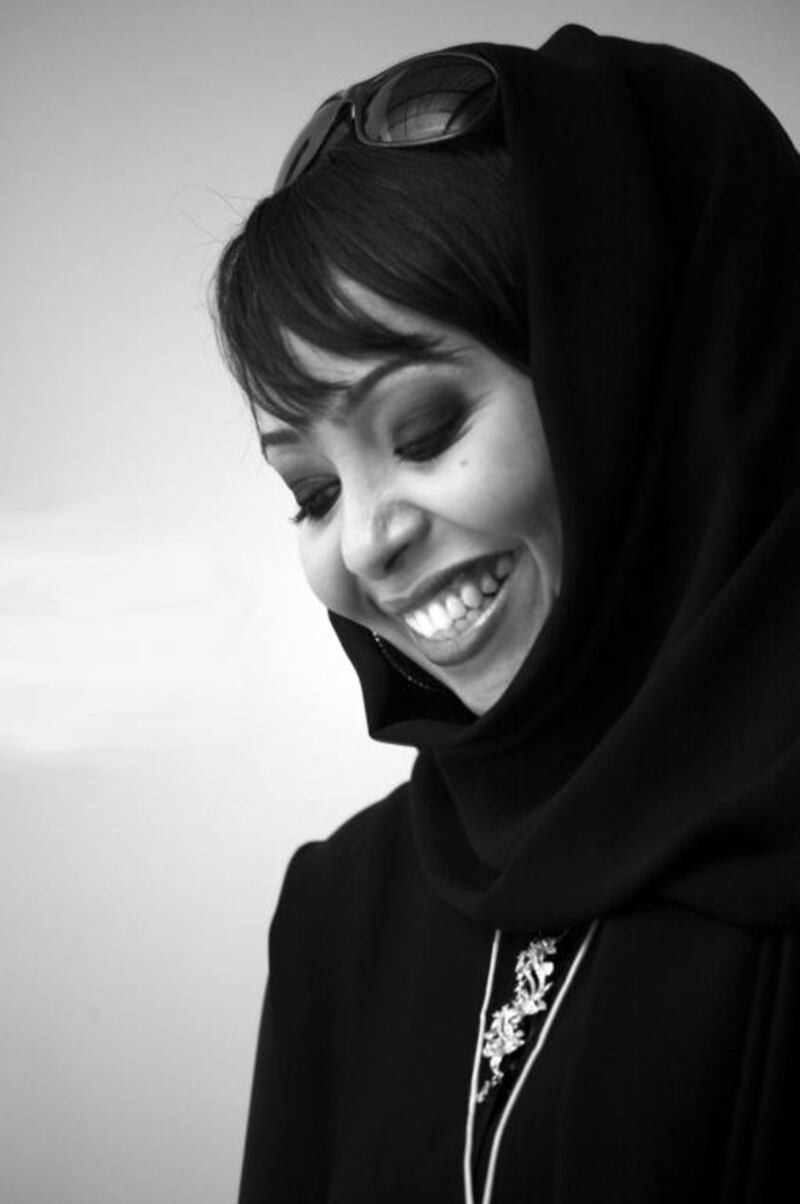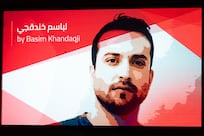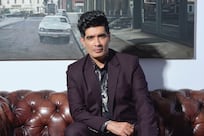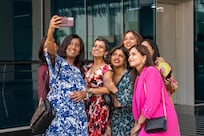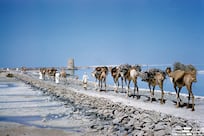In the arts, with trends and moods changing as often as installations on a gallery wall, it is a credit to Ebtisam Abdulaziz that she is still remembered for a performance she completed almost a decade ago.
In 2007, well before the contemporary art boom, she donned a black bodysuit covered in bright-green numbers and stood in the middle of a Sharjah roundabout to take a series of self-portraits. The numbers came from her bank statements, collected between 2003 and 2005.
Not only was it controversial for an Emirati woman to be seen in public in this way, it was also a searing commentary on the materialistic society in which she found herself in.
“This was me saying we are not human any more, we are just numbers and those numbers are money,” she said in 2012. “It is a representation of me in this culture and the kind of material life that we are living.”
Perhaps because of its memorable content, the piece Autobiography lives on in artistic memory. It was also a declaration of her style – bold, brave and with an unflinching dedication to numbers and statistics.
For as well as being one of the UAE’s leading conceptual artists, Abdulaziz was also a high-performing student of mathematics and science, graduating with a double bachelor’s degree in the subjects from Al Ain University in 1999.
She has an almost compulsive obsession with numbers and systems that can be seen in almost all of her works.
Her early work, including Ten Triangles (2004), a complex puzzle, and Life in a Bag, a collection of X-ray images of women's handbags collected at the Sharjah Ladies Club in the same year, can be seen as the precursor to her first large-scale exhibition at the Sharjah Biennial in 2005.
Numbers & Lifetime was an archive of 2,000 images of hands, an attempt to persuade viewers to imagine the lives of other people through an image of their hand, coupled with statistical information such as their age, nationality and profession.
The work was acquired by Deutsche Bank which, in 2011, dedicated a whole floor of its Frankfurt headquarters to Abdulaziz’s work.
In Re-Mapping the Continent of Africa, which was unveiled at the Benin Biennial in 2012, she devised a geometric code to map out 62 African countries based on the letters in their names. The result, a kind of constellation formation of pencil-drawn triangular shapes, was mysterious and demanded consideration, as do the formulae used by colonial powers to arbitrarily create borders of the continent in the first place.
In 2013, for her first solo show in her Dubai gallery, The Third Line, which she also decided to call Autobiography, the artist turned many mundane aspects of her everyday life into codes and equations that only she could understand. For example, she recorded the number plates of cars that she saw during her frequent trips between Abu Dhabi, Dubai and the Northern Emirates and turned them into matrices of domino layouts, with each number corresponding to a certain colour or letter seen on the cars.
She even presented pages from her personal daily diary and memoirs, but, of course, not in a legible form. She used cryptography to formulate a code of black dots within a grid system that allows a glimpse into her life and inner workings of her mind.
“I really want to strive for my own style and express myself. I don’t want to be in a box that defines me as a performance artist or a painter or any specific type of artist, it is the concept that drives me first and then the medium.”
First and foremost, Abdulaziz wants to make her audiences think. She sees her art as a way of creating a problem between the audience and the art piece and wants to force them to stop and think to unravel the conundrum that she has presented.
It is also about encouraging a debate between her viewer and herself, as well as among the audience members.“I think mathematics is very close to everything in this world,” she says.
“I am in love with maths and that is why I chose to study it but also, at the time [in 1993] when I graduated high school, there were no art colleges here.
“However, I always knew that I would do something with my maths and art together. You can’t separate art from anything else. It is related to the body, to theatre, to science, to life. Art is within us, it is very close to any kind of science, especially mathematics.”
• Ebtisam Abdulaziz is represented by The Third Line gallery. For more information about her and to see other artworks, visit thethirdline.com
aseaman@thenational.ae
